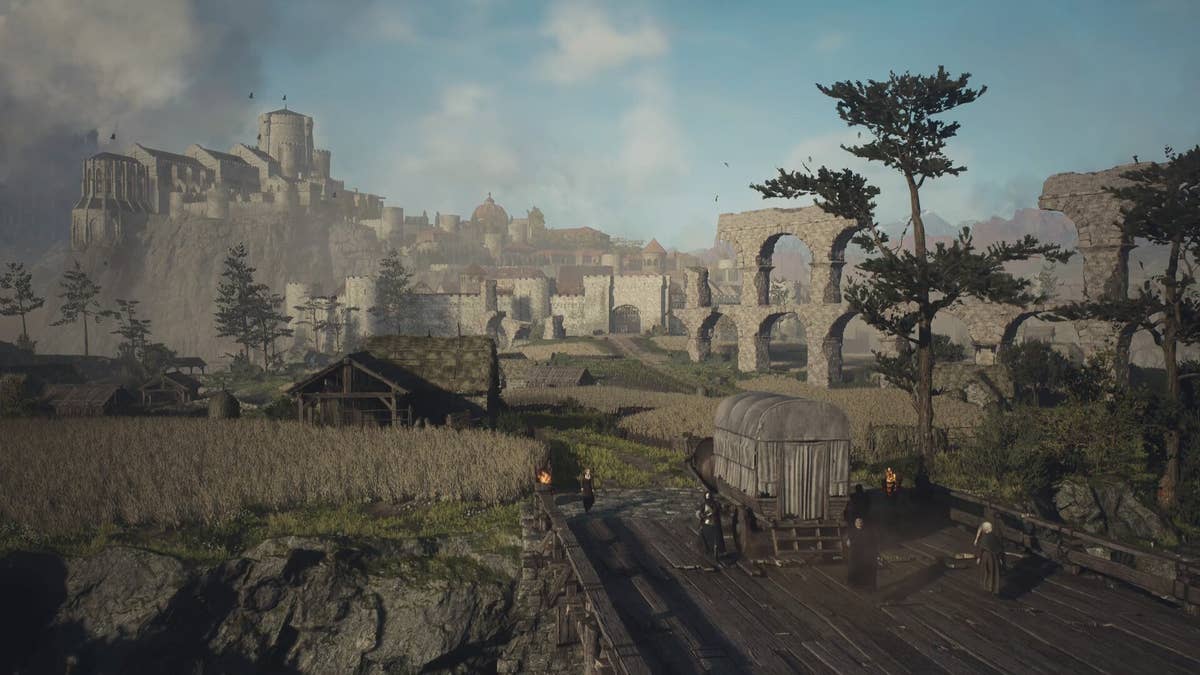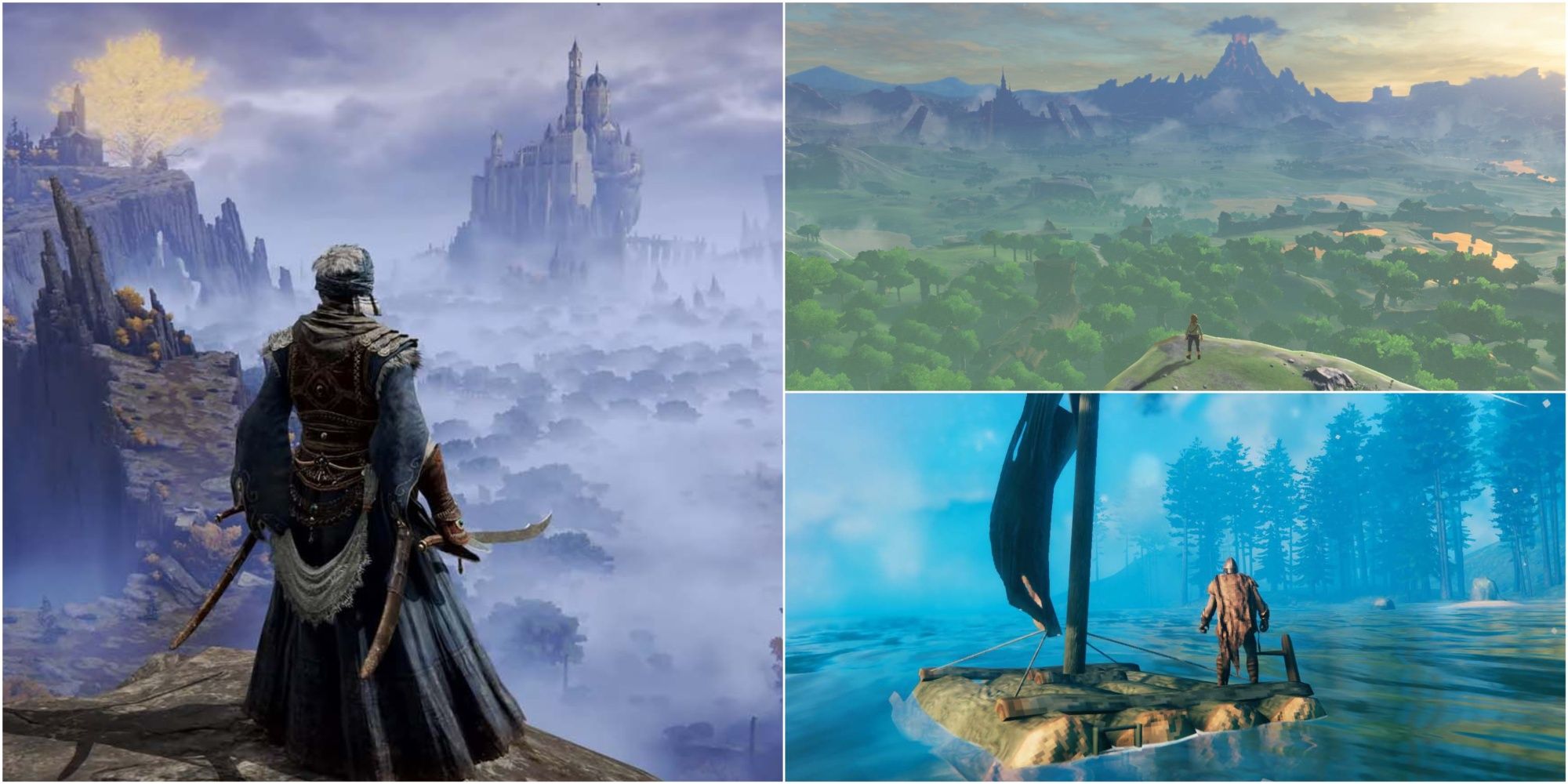
Introduction
Definition of Open-World Games
Open-world games are a genre of video games characterized by their expansive environments that players can explore freely. Unlike traditional linear games that often funnel players down a specific path, open-world games grant players the liberty to roam vast virtual worlds, engage with various missions, and interact with dynamic characters at their own pace. The allure of open-world gaming lies in the freedom it offers; players can choose to follow the main story, embark on side quests, or simply lose themselves in the game’s immersive universe.
These games often boast rich, interactive environments filled with diverse elements—from bustling cities to tranquil landscapes—creating a living, breathing world. Players might discover hidden treasures, face unexpected challenges, or simply enjoy the scenery.
Brief History of Open-World Games
The history of open-world games can be traced back to titles like “Zork” in the late 1970s, which introduced players to a text-based adventure that required exploration and critical thinking. Fast forward to the 1990s, and games like “The Legend of Zelda: Ocarina of Time” and “Grand Theft Auto III” expanded on the concept, providing players with expansive environments and non-linear storytelling.
Key milestones in the open-world genre include:
- 1996: “The Elder Scrolls: Arena” introduced a vast realm to explore.
- 2001: “Grand Theft Auto III” set a new standard with its urban landscape and freedom of choice.
- 2011: “The Elder Scrolls V: Skyrim” pushed boundaries with its detailed world and immersive quests.
As technology advanced, so did the complexity and depth of open-world games, leading to the wealth of engaging experiences we see today.

Features of Open-World Games
Non-linear Gameplay
One of the standout features of open-world games is their non-linear gameplay. Players are not confined to a predetermined path; instead, they can tackle missions and challenges in any order they choose. This flexibility allows for a personalized gaming experience, catering to different play styles.
For example, a player might spend hours engaging with side quests, discovering unique character backstories, or engaging in mini-games rather than progressing straight through the main story. This sense of freedom fosters a deeper connection to the game world.
Immersive Environments
Immersive environments are crucial in open-world games. Developers craft visually stunning landscapes, from sprawling cities to idyllic countryside, filled with minute details that enhance realism.
Consider titles like “The Legend of Zelda: Breath of the Wild,” where players can climb mountains, sail across oceans, and interact with wildlife. These beautifully rendered settings invite exploration and offer a sense of wonder and discovery.
Dynamic NPCs
Another compelling feature is the presence of dynamic non-player characters (NPCs). These characters are not merely background elements; they react to player choices, contributing to the game’s evolving narrative.
For instance, in “Red Dead Redemption 2,” NPCs remember players’ past interactions, which can alter future encounters or mission outcomes, creating a more personalized experience.
Exploration and Discovery
Exploration is at the heart of open-world games. Players are encouraged to venture off the beaten path, uncovering hidden secrets, collectibles, and lore.
This rewarding system of exploration can lead to thrilling adventures—like stumbling upon a hidden temple in “Skyrim” or discovering a lore-rich area in “The Witcher 3.” Ultimately, the joy of exploration drives players to immerse themselves in these captivating worlds.

Technology Behind Open-World Games
Game Engine Development
The backbone of any open-world game lies in its game engine. These sophisticated frameworks serve as the foundation upon which the entire game is built, enabling developers to create expansive environments and complex gameplay systems. Notable game engines like Unreal Engine and Unity have paved the way for the development of open-world titles.
For instance, Unreal Engine 4 powers games like “Fortnite” and “Final Fantasy VII Remake,” allowing creators to leverage high-end graphics while managing massive open worlds. Game engine development continues to evolve, bringing tools that facilitate seamless world-building, allowing developers to focus on creativity rather than technical limitations.
Graphics and Rendering
Graphics and rendering play a pivotal role in creating visually stunning open-world games. The detailed textures, dynamic lighting, and realistic physics contribute to the immersive experience.
During gameplay, when players see a sunset casting a golden hue over a sprawling city, it’s the intricate work of advanced rendering techniques at play. Technologies like ray tracing enhance visual realism by simulating light behavior, enriching scenes and deepening the immersion.
Many gamers can remember being awestruck by the breathtaking visuals in “The Witcher 3,” where lush forests and stormy seas felt so real that players could almost feel the wind on their faces.
Artificial Intelligence
Artificial intelligence (AI) is another critical component in open-world games. The NPCs that populate these vast environments need to feel alive and responsive to player actions. Advanced AI systems allow NPCs to behave dynamically, reacting to changes in the game world and player decisions.
In “Grand Theft Auto V,” for example, roadside pedestrians exhibit authentic behaviors, from reacting to the player’s character to engaging in their own activities. This realism enhances immersion, creating a world that feels both vibrant and believable.
As technology continues to progress, the integration of sophisticated AI will further enhance the depth and realism of open-world games, making each player’s journey unique and memorable.

Popular Open-World Game Franchises
Grand Theft Auto Series
The “Grand Theft Auto” (GTA) series stands as one of the most iconic open-world franchises in gaming history. Developed by Rockstar Games, it offers players an expansive and immersive experience set in fictional cities inspired by real-world locations. Players can engage in a variety of activities, from missions to spontaneous chaos, whether driving through the streets of Los Santos or planning heists. The series is renowned for its rich storytelling, satire, and detailed environments, making it a cultural phenomenon.
For many gamers, the excitement of exploring the world of GTA is unparalleled—there’s always something to discover, be it a hidden vehicle or a memorable character encounter.
The Elder Scrolls Series
“The Elder Scrolls” series, particularly “Skyrim,” has captivated players with its vast fantasy realms. Inside this world, players can become anything from a noble warrior to a cunning thief. The depth of lore, intricate quests, and the ability to choose your own path truly define the essence of open-world exploration.
Many players relish the experience of wandering through the snowy peaks of Skyrim or engaging in side quests that uncover the rich history of the land.
The Legend of Zelda Series
Next up is “The Legend of Zelda” series, particularly “Breath of the Wild,” which revolutionized the franchise with its open-world design. The game’s beautiful landscapes and physics-based mechanics offer freedom rarely seen in previous titles. Players can climb mountains, paraglide through the air, and explore vast regions, leading to countless memorable adventures.
The thrill of discovering hidden shrines and solving environmental puzzles creates an engaging experience that resonates with fans.
Red Dead Redemption Series
Lastly, Rockstar’s “Red Dead Redemption” series immerses players in the American Wild West, combining storytelling with breathtaking visuals and detailed open-world environments. The blend of narrative depth and exploration allows players to experience the life of an outlaw, filled with moral choices and dynamic interactions.
The verdant valleys and dusty towns become a picturesque backdrop for memorable encounters, like herding cattle or engaging in shootouts. Each franchise offers a treasure trove of experiences, perfectly embodying the allure of exploring open-world games.

Impact of Open-World Games
Cultural Influence
Open-world games have left an indelible mark on popular culture, influencing not just gaming but also music, art, and film. Titles like the “Grand Theft Auto” series have sparked conversations about societal issues, while their satirical take on modern life resonates with players.
Many players can recall the excitement of hearing a familiar tune on the in-game radio or discovering references to real-world events, which adds depth and humor to the experience. Commemorative events and fan art dedicated to these games speak volumes about their cultural footprint.
Evolution of Game Design
The success of open-world games has prompted an evolution in game design practices. Developers are now creating larger, more detailed game worlds with interconnected narratives. This shift has led to innovative mechanics, such as procedurally generated content and dynamic weather systems, enhancing the realism of in-game environments.
For instance, “The Elder Scrolls: Skyrim” set a high standard with its rich lore and expansive world, prompting other developers to adopt similar approaches in subsequent projects.
Player Engagement and Freedom
One of the most significant impacts of open-world games is the emphasis on player engagement and freedom. Players are encouraged to pursue their own paths and make choices that affect their journey. This autonomy fosters a sense of ownership over the game experience, leading to increased enjoyment and replayability.
Whether it’s solving a quest in “The Legend of Zelda: Breath of the Wild” differently each time or living out a unique story in “Red Dead Redemption 2,” the freedom to explore encourages deeper connections to the game and its narrative. Through this engaging design, open-world games have transformed the landscape of interactive entertainment, making players not just participants but active storytellers in their adventures.

Future Trends in Open-World Gaming
Virtual Reality Integration
As technology advances, one of the most exciting trends in open-world gaming is the integration of virtual reality (VR). This innovation promises to revolutionize how players experience vast game worlds. Imagine stepping into your favorite open-world title, like “The Elder Scrolls,” and physically exploring its stunning landscapes.
With VR, players can interact with environments in a truly immersive manner, whether it’s feeling the sensation of drawing a bow or navigating through dense forests. Companies are already experimenting with VR adaptations, leading to games that fully utilize spatial awareness and offer a sense of presence like never before.
- Enhanced immersion: VR can transport players into the game world.
- Interactive exploration: Players can engage with their surroundings interactively, heightening the experience.
Enhanced Realism and Interactivity
Along with VR, the future of open-world gaming lies in enhanced realism and interactivity. As developers harness technologies like ray tracing and advanced physics engines, game worlds are becoming increasingly lifelike.
For instance, natural phenomena, such as changing weather patterns or the vibrant hustle of city life, are set to be more accurately represented. The use of improved AI can also add layers of depth, where NPCs react more spontaneously to player actions and environmental changes.
Players may find themselves in a world where every choice has tangible consequences—a true “living world” experience. Enhanced realism not only captivates players but compels them to think critically about their actions and their impacts within the game narrative, ultimately enriching their gameplay experience. The convergence of these trends points toward a future where interplay between the player and the virtual world reaches unprecedented heights, ushering in a new era of engagement in open-world gaming.

Conclusion
Recap of Unique Aspects of Open-World Games
As we explore the fascinating landscape of open-world games, it becomes clear why this genre has captured the hearts of millions. From their non-linear gameplay, which allows players to dictate their journey, to immersive environments that invite exploration and discovery, every aspect contributes to a rich, engaging experience.
Key features that stand out include:
- Dynamic NPCs: Characters that react realistically to players enhance immersion.
- Limitless exploration: Open worlds are filled with secrets, quests, and hidden gems waiting to be discovered.
- Innovative storytelling: Narrative depth allows players to forge personal connections to the game’s themes.
These attributes come together to create vibrant worlds that resonate with players long after they’ve set down the controller.
Final Thoughts on the Genre
In summary, open-world games represent not just a genre but a revolution in gaming. They balance player freedom with intricate worlds and stories, allowing for endless possibilities and experiences. As technology continues to evolve, the future of open-world gaming holds even more promise—from virtual reality integration to enhanced realism.
For both seasoned gamers and newcomers, the thrill of diving into these expansive universes remains unmatched. The journey through open worlds is not merely about the destination but the unique stories and adventures that unfold along the way—each player a storyteller in their right, making their mark in the digital realm. This genre will undoubtedly continue to shape gaming culture for years to come, solidifying its place as a cornerstone of modern entertainment.

